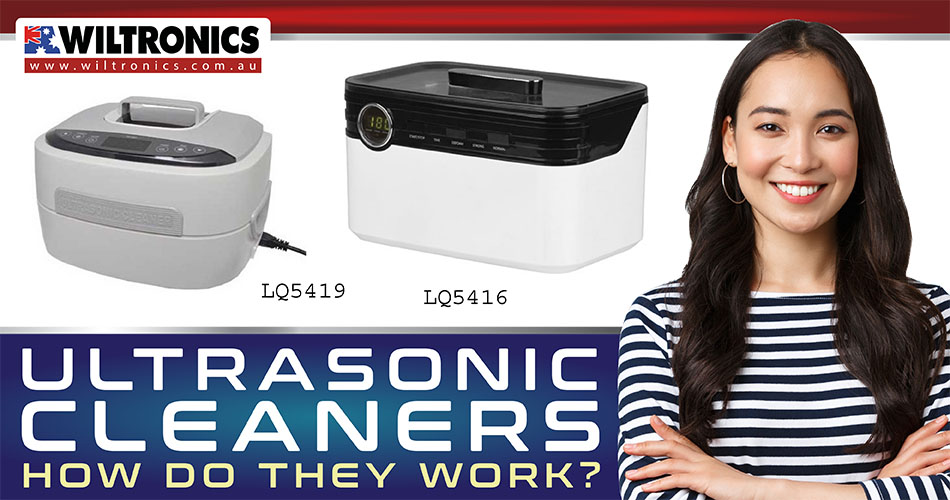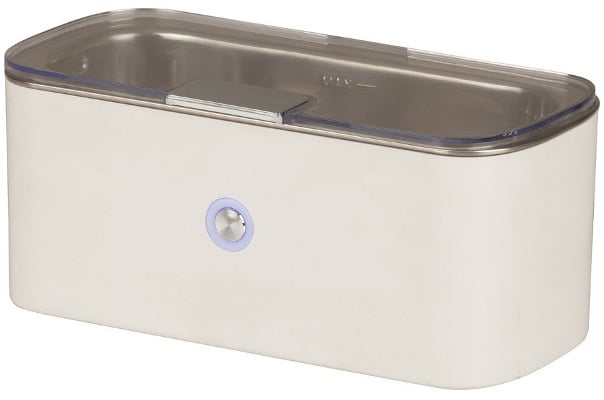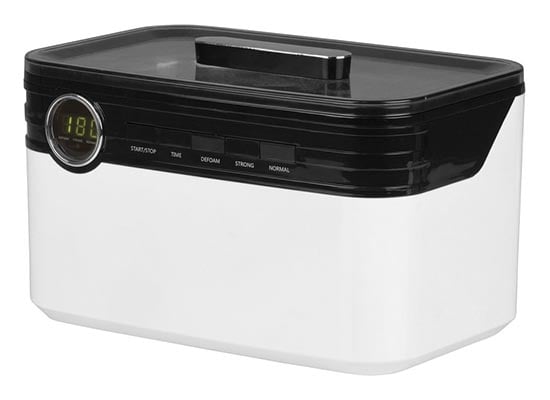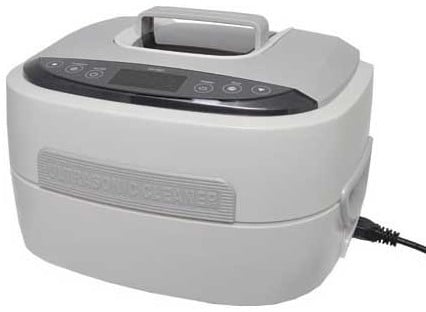How Do Ultrasonic Cleaners Work: A Guide
May 2, 2022

When shopping for electronics, you might come across ‘ultrasonic cleaners’ on the market.
Technological advancement has made our lives more convenient. For instance, cleaning is easier with a range of helpful inventions.
One improvement is ultrasonic cleaning, a handy, professional cleaning method. It’s great in the engineering industry and for electronic hobbyists.
This is where ultrasonic cleaners come into play.
These cutting-edge and innovative devices have made cleaning a lot easier. From removing soils, contaminants, and grime to the most difficult to clean materials!
But how do ultrasonic cleaners work? Do you need them? Where and when should you use one?
In this post, we will help you understand how they work before deciding whether they are the best solution for you!
Ultrasonic Explained
Ultrasonic refers to sound frequencies higher than the audible limit of human hearing. The frequency ranges from almost 20,000 to 100,000 cycles per second.
Both low and high frequencies have different effects. They are usually used for special applications.
The first use of ultrasonics began during World War 1. Transducers were weak up until the 1960s when things started to take a turn.
Today, we now have more effective and reliable ultrasonic cleaners.
The Basics of Ultrasonic Cleaning & Machines
When it comes to preparing parts for coating or welding, washing is a crucial step. Ultrasonic cleaning is the safest and most effective way to get the job done.
Ultrasonic cleaners work like automatic dishwashers. But instead of dishes, most often, ultrasonic cleaners are used to clean items difficult or impossible to wash by hand. Cleaning applications include:
- Greasy engine components
- Newly machined and fabricated parts
- Medical and surgical instruments
- Precision options
- Laboratory glassware
These cleaning machines also offer complete and rapid removal of dirt and contaminants. Especially from items that are put in a water tank agitated with sound waves.
Ultrasonic cleaners come in a variety of sizes. Although they all serve the same purpose, they sometimes meet different, specific needs.
The Components
Ultrasonic cleaners or ultrasonic cleaning machines are also sometimes called ‘ultrasonic washers’. These bath cleaners include the following essential components:
- Cleaning tank. It holds the fluid and the items to be cleaned. Each tank varies in size and accommodates a different amount of solvent.
- Generator. It is the power supply. It transforms AC electrical energy into an ultrasonic frequency.
- Transducer. It is the key component in an ultrasonic cleaning system. It converts the ultrasonic electrical signal to mechanical energy.
- Electrical energy. It powers the transducers. Most ultrasonic cleaners run at an average power of 50 watts to 100 watts per gallon.
How Do Ultrasonic ‘Cleaners’ Work?
An ultrasonic cleaner uses ultrasound and water with an appropriate cleaning solvent. Behind the high-frequency sound waves are the transducers and electric wave generators.
Transducers are made from piezoelectric crystals. These crystals change in size when an electrical voltage is applied.
The converted sound wave energy radiates through a tank or tub in the ultrasonic cleaner. The high-frequency sound waves, typically 40 kHz, agitate the water solution or solvent.
This causes the cavitation of solution molecules. Cavitation forms when sonic energy creates a void that gets trapped as a bubble.
These microscopic bubbles burst with a force that removes contaminants adhering to surfaces. Ultrasonic cleaning machines scrub surfaces clean through implosions of tiny bubbles.
How Does Ultrasonic ‘Cleaning’ Work?
Ultrasonic cleaning is suitable for a wide variety of materials, including:
- Metals
- Glass
- Rubber
- Ceramics
- Hard plastics
It is especially useful for removing tightly-adhered contaminants from intricate items. This includes blind holes, cracks and recesses.
The “micro-scrubbing” in an ultrasonic cleaning system is highly uniform throughout the surface. This allows the part or component to be cleaned thoroughly – inside and out.
To break it down, the ultrasonic cleaning process goes like this:
- Place the part(s) that needs cleaning into the ultrasonic cleaner.
- Fill the tank with enough liquid (water or a cleaning solution) to submerge the part(s).
- Close the tank and activate the ultrasonic machine.
- Inside, the transducers and ultrasonic wave generators cause the tank to vibrate. At the same time, it produces cavitation. This pressure forces dirt, rust and other contaminants off the part(s).
- About 5 minutes later, the tank’s contents are clean and ready to be coated!
The fluid used can be water-based or solvent-based. Both types of cleaning solutions contain wetting agents. They help reduce surface tension and increase cavitation.
The cleaning time depends on how dirty an object or part is. The normal trial period can be between 2 to 10 minutes. For thorough cleaning, you may need to perform an ultrasonic cleaning more than once.
Tip: For minimal supervision, opt for an ultrasonic cleaner with a longer cycle time. Alternatively, go for a unit with a lower cycle time for tasks that need to be done quickly (with supervision).
Ultrasonic Cleaners Maintenance
Most ultrasonic cleaners come with a one to two years warranty. To ensure your cleaning machine stays in tip-top condition for many years, do the following:
Do not operate it when the solution is too low. Otherwise, it will damage the transducer.
Avoid using solutions with a high alkaline or acid level. Also, make sure not to slope the solution to prevent it from running into the machine.
Keep the surface dry and clean; do not let your machine sit on wet ones or damp towels or clothes. Lastly, proper cleaning maintenance is important, especially after use. This will help you get the best performance possible.
Get Your Ultrasonic Cleaners Here
Our ultrasonic cleaners are sturdy and will last for years to come. Different power and tank capacity options are available!

400ml 30W Ultrasonic Cleaner
Product code: LQ5420
This ultrasonic cleaner cleans your jewellery, dentures, small machine parts and more. Easy to use and mains powered.
Fill the 400ml bowl with water and add a mild cleaning solution. Press the power button to start the 3-minute timer.

1800ml 70W Ultrasonic Cleaner
Product code: LQ5416
This cleaning machine has a generous size 1.8-litre stainless steel bowl. It illuminates in blue when in use and has five-panel mounted push buttons for easy operation.
Features include five timer settings, LED display, and strong or normal power settings. Plus, a defoam setting that cycles the cleaner for 5 seconds with 3-second intervals. Mains powered.

Ultrasonic Cleaner 60W with Digital Display
Product code: LQ5419
This ultrasonic cleaner can blast dirt, grease and grime from the tiniest of objects. It features a powerful industrial 60W transducer.
What’s more, the 2.5-litre tank is large enough to hold objects like spectacles, car parts, and dentures. It has an inbuilt 100W ceramic heater to help shift more grime from surfaces.
This product is ideal for professional frequent use environments.
Ultrasonic Cleaners: The Bottom Line
Washing and cleaning can be laborious to some. This is particularly true for those who wipe off germs and other contaminants from an object.
Fortunately, there is a cleaning tool that does the job for you while you sit, relax, and watch. Indeed, ultrasonic cleaners make the perfect device for easing the stress of cleaning.
You will find different models available that meet your cleaning needs. Our offers above will satisfy your demands!
© Electrotech Brands Pty Ltd 2022


Write a Comment
You must be logged in to post a comment.